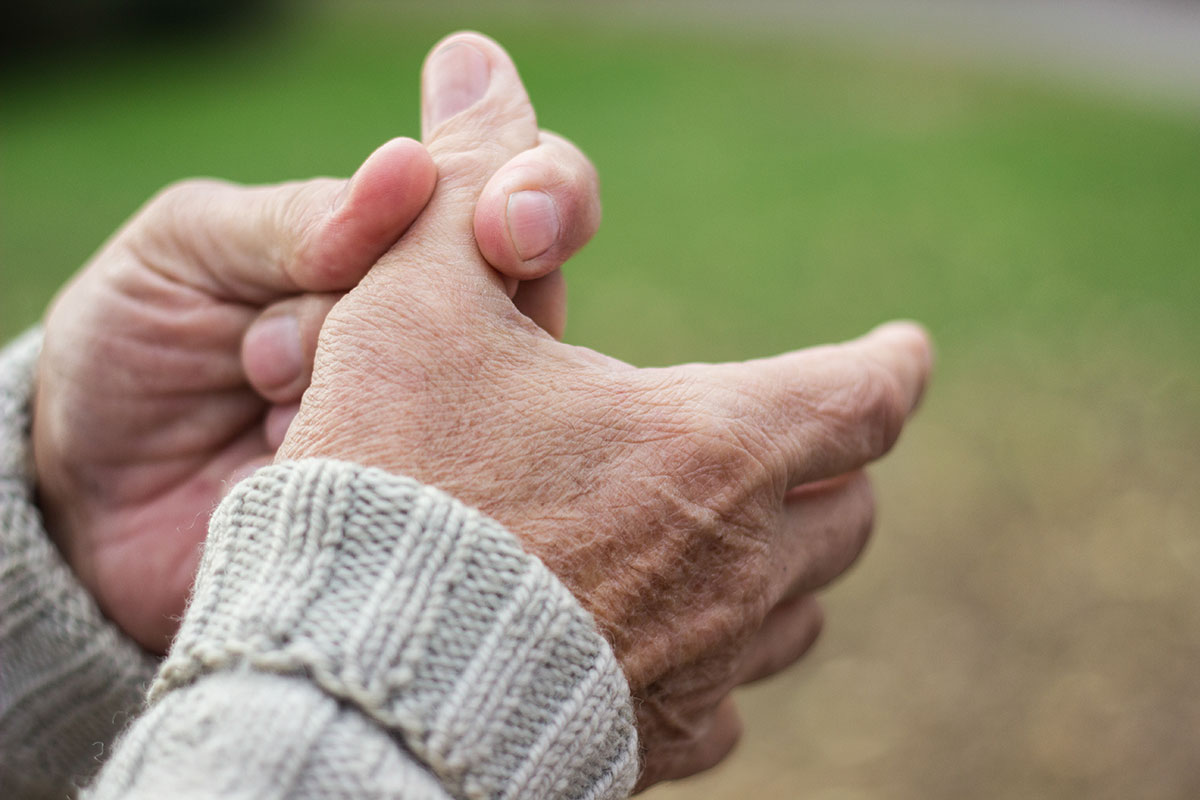

What is Arthritis at the Base of the Thumb?
Thumb basal joint arthritis is a common condition that causes pain in the thumb with movement and tasks that require grip and dexterity. It involves the degradation of the cartilage between the thumb metacarpal and the trapezium. This can be associated with stretching of the ligaments at the same joint, which can lead to deformity and further joint pain.

Who Gets Thumb Arthritis?
Thumb arthritis usually affects people over the age of 40. Anyone can get thumb arthritis, though some people are more susceptible to it, whether through genetics or heavy use. As we use our hands throughout our lives for everyday tasks, such as writing, sewing, cooking, and doing yard work, the cartilage at the base of our thumbs can gradually wear away and the ligaments can become unstable. This can cause pain and deformity.
This joint has a unique shallow saddle shape that allows our thumbs to move in multiple directions giving our hands the unique ability to perform complicated fine motor tasks. This freedom of movement also means that this joint is susceptible to wear and tear over time.
Symptoms of Thumb Arthritis.
The most common symptom of thumb basal joint arthritis is pain at the base of the thumb, especially with pinching tasks, such as opening bottles, writing, and sewing. Other symptoms include weakness, stiffness, and instability. This can cause people to not only have pain when doing activities of daily living, but to also have a loss of dexterity, often resulting in people dropping and having difficulty handling small items.
Therapy for Thumb Arthritis.
Occupational therapists and hand therapists can help to relieve symptoms of thumb arthritis with orthoses, modalities, education about joint protection techniques and adaptive equipment, and exercises to slow its progression.
An orthosis can be used to rest a painful thumb and to support it during activities. The specific type of orthosis used can vary. For some people an over-the-counter orthosis can provide adequate support, and for those who place high demands on their thumbs or who have significant instability, a custom fabricated orthosis might be necessary.
Utilizing simple joint protection techniques can often help to reduce pain and prevent injury. For example, using one’s forearms and elbows to carry shopping bags avoids placing stress on the thumbs. Additionally, using adaptive equipment can help to reduce the pain during daily tasks. Tools with wide and comfortable grips when using tools and kitchen equipment increase comfort and decrease stress.
Exercises that strengthen certain muscles, such as the first dorsal interossei, can help to increase the stability of the basal joint, which can help to slow the progression of the arthritis. Additionally, exercises that increase proprioception – one’s awareness of movement and position in space – can help to increase stability during functional tasks.
Further Medical Treatment
In some cases, conservative treatment fails to provide adequate relief. In these scenarios a thumb CMC arthroplasty may be the best solution. This can allow people to return to their valued occupations while providing significant pain relief. The most common type of procedure for this is a ligament reconstruction and tendon interposition (LRTI) procedure, in which the trapezium is removed and a tendon is used to provide ligamentous support and to strengthen the joint. The thumb and wrist are immobilized for a period of time after the procedure. Then one will need to attend hand therapy to regain mobility and strength in the hand and wrist. One should expect to return to full use of the affected hand after this procedure, whether that means knitting or doing triathlons. Learn more about basal joint surgery.
If you or someone you know is suffering from a hand injury, we encourage you to schedule a consultation with one of our experienced orthopaedic surgeons or hand therapists at CAO. We are committed to helping our patients achieve optimal outcomes and return to their active lifestyles as quickly and safely as possible. Schedule an appointment with a hand and upper extremity specialist today!